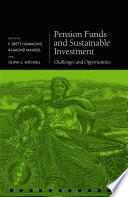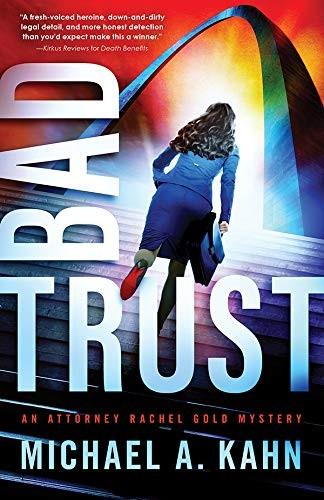https://ebookmass.com/product/sustainable-mass-transitchallenges-and-opportunities-in-urban-public-transportationthomas-abdallah/
Instant digital products (PDF, ePub, MOBI) ready for you
Download now and discover formats that fit your needs...
Pension Funds and Sustainable Investment: Challenges and Opportunities Olivia Mitchell
https://ebookmass.com/product/pension-funds-and-sustainableinvestment-challenges-and-opportunities-olivia-mitchell/
ebookmass.com
Oil and Oilseed Processing: Opportunities and Challenges Tomás Lafarga
https://ebookmass.com/product/oil-and-oilseed-processingopportunities-and-challenges-tomas-lafarga/
ebookmass.com
Artificial Intelligence in the Gulf: Challenges and Opportunities Elie Azar
https://ebookmass.com/product/artificial-intelligence-in-the-gulfchallenges-and-opportunities-elie-azar/
ebookmass.com
Bad Trust Michael A. Kahn
https://ebookmass.com/product/bad-trust-michael-a-kahn/
ebookmass.com
Elsevier
Radarweg29,POBox211,1000AEAmsterdam,Netherlands
TheBoulevard,LangfordLane,Kidlington,OxfordOX51GB,UnitedKingdom 50HampshireStreet,5thFloor,Cambridge,MA02139,UnitedStates
Copyright r 2017ElsevierInc.Allrightsreserved.
Nopartofthispublicationmaybereproducedortransmittedinanyformorbyanymeans,electronicor mechanical,includingphotocopying,recording,oranyinformationstorageandretrievalsystem,without permissioninwritingfromthepublisher.Detailsonhowtoseekpermission,furtherinformationaboutthe Publisher’spermissionspoliciesandourarrangementswithorganizationssuchastheCopyrightClearance CenterandtheCopyrightLicensingAgency,canbefoundatourwebsite: www.elsevier.com/permissions
ThisbookandtheindividualcontributionscontainedinitareprotectedundercopyrightbythePublisher (otherthanasmaybenotedherein).
Notices
Knowledgeandbestpracticeinthisfieldareconstantlychanging.Asnewresearchandexperiencebroaden ourunderstanding,changesinresearchmethods,professionalpractices,ormedicaltreatmentmaybecome necessary.
Practitionersandresearchersmustalwaysrelyontheirownexperienceandknowledgeinevaluatingand usinganyinformation,methods,compounds,orexperimentsdescribedherein.Inusingsuchinformationor methodstheyshouldbemindfuloftheirownsafetyandthesafetyofothers,includingpartiesforwhomthey haveaprofessionalresponsibility.
Tothefullestextentofthelaw,neitherthePublishernortheauthors,contributors,oreditors,assumeany liabilityforanyinjuryand/ordamagetopersonsorpropertyasamatterofproductsliability,negligenceor otherwise,orfromanyuseoroperationofanymethods,products,instructions,orideascontainedinthe materialherein.
BritishLibraryCataloguing-in-PublicationData
AcataloguerecordforthisbookisavailablefromtheBritishLibrary
LibraryofCongressCataloging-in-PublicationData
AcatalogrecordforthisbookisavailablefromtheLibraryofCongress
ISBN:978-0-12-811299-1
ForInformationonallElsevierpublications visitourwebsiteat https://www.elsevier.com/books-and-journals
Publisher: JonathanSimpson
AcquisitionEditor: BrianRomer
EditorialProjectManager: AndraeAkeh
SeniorProductionProjectManager: PriyaKumaraguruparan
CoverDesigner: MatthewLimbert
TypesetbyMPSLimited,Chennai,India
SUSTAINABILITYANDENERGYUSE
Sustainabilitycanbemodestlydescribedasnotcompromisingtheneedsof futuregenerationswiththeneedsofthepresent.Considertheuseoffossil fuelstocultivateenergyneeds.Thescientificprocesstoextractenergyfrom coal,oil,ornaturalgasisperhapsthecornerstoneofourcontemporarycivilization,andoneofmankind’sgreatestscientificachievements.However,the
beenestablishedinthemasstransitsetofcorevalues.Alongwithsafety, integrity,reliance,resilience,customerserviceamongothers,sustainability hasbecomeasmuchapartofthefabricofthemasstransitsectorasany othercorevalue.Sustainableelementsareinitiatedtomakethetrainand lightrailsystemsmoreenergyefficient.
Sustainableelementscanbepartoftheinfrastructure,includingtrack, lighting,signalsystems,substations,subwayortrainstationenvironments, andtheancillaryfacilities,suchastraincarmaintenanceshops,traincar storagefacilities,and/orbusdepots.Vehicleshavealsobeenmademore energyefficienttosavefuelorelectricity.Busesthattraditionallyrunondieselfuelhaveseenamajorupheavalwhenitcomestobeingmoreefficient andawholelotcleaner.
CleanBuses
AccordingtoTheAmericanPublicTransportationAssociation(APTA),almost halfofallUSpublictransportationbusesasofJanuary1,2015wereusing alternativefuels,suchascompressednaturalgas,biodiesel,orhybridtechnology,withhybridbusescomprising16.7%ofUStransitbuses.Hybridbuses havehelpedignitetheproliferationoftheentirehybridautomotiveindustry.
Twentyyearsago,therewereahandfulofhybridbusesusedthroughout thecountry,withveryfewpublicagenciesparticipatinginthisrelatively newtechnology.Todaymostbusfleetshaveatleastsomepercentageof hybridbuses,andmanyhaveverylargepercentagesincludingentirefleets ofhybridbuses.Atthebeginningoftheirusage,theywerestudiedintensely, andthatinformationinthatanalysisbecameavailabletoaidnotonlythebus industry,butalsotheentireautomobilebusinessinhelpingtostudyand continuetoimprovetheperformanceofhybrids.
Animportantmetricforthemasstransitindustryismilestraveled betweenfailures,andstudieswereconductedtoascertaintheoveralleffectivenessofhybridbusesinregardtomaintenanceroutineandschedule. Thesestudiesincludedperformanceanalysisinvariousenvironments,such ascoldorhotclimate.Asabenefitofthegovernment-infusedfunding ofhybridbusesinthepublictransportationsector,todayalmostallbus manufacturershavehybridoptionsforalmostalloftheirvehicles.
GROWINGANDREVITALIZINGACITY
ThesubwaysystemofNewYorkCityhelpeditgrowintowhatisarguably thegreatestcityintheworldanddefinitelytheeconomiccenterpieceofthe universe.ManyfactorscontributedtoNewYorkCity’sevolution,nonemore importantthanthebelowgroundsubwaysystem,whichcarriesmillionsof commuterseveryday,andhasbeencalledthelifebloodofthecity.Mass transitcanmakeabigdifferenceinthegrowingorrevitalizationofacity.
Numerouslargecitieshaveexcellentsubwayorrailsystemsandreapthe benefitsbothsustainablyandeconomically.NewYorkCityisagreatexampleofasustainablecitybecauseofitsmasstransitsystem.Almosthalfthe populationinNewYorkCitydoesnotownorhasaccesstoacar.Energy consumptionperpersoninNewYorkCityisonequarterthenationalaverageduelargelytomasstransitoperationsincludingsubwayandbusservice.
InNewYorkCity,thebirthofthesubwaysystemledtotheproliferation oflargeofficebuildingscentrallylocatedinManhattan,andagoodmajority ofpeopletakingpublictransportationfromtheouterboroughs.ThetremendousamountofbuildingsincludingmanyskyscrapersinManhattan,and numerousresidencesintheouterboroughs,meanstheheatingandcooling ofbuildingsandhomesmakeupthelargestpercentageofpollutionand greenhousegasemissionsinNewYorkCity.
Investinginmasstransitisfundamentallygoodfortheeconomy.Acity withnumerousmasstransitoptionswillattractpeoplewhowanttoresidein anurbanenvironmentandliveneartransit.Byaddingmasstransitwithina city,itcanhelpgrowitspopulation,whichinduecourseshouldtranslateto moremoneyintheireconomy.Publictransportationagenciesplayacritical roleinanyregionorcityinadditiontoprovidingmobilityoptions, transitagenciesemploymanypeople,andcontractwithprivatevendorsfor engineeringservices,fuelandothermaterialsandservices.
Subway,LightRail,orBusRapidTransit
Toinstituteanewmasstransit,infrastructurewithinacityorbetweenregions isverycomplex,costly,andtimeconsuming.Tunnelinganewsubwaysystemisextremelyexpensiveandtakesconsiderabletime,isintrinsically fraughtwithdelayafterdelay,andhasnumerouspotentialenvironmental impactsinconstruction.However,forexistingcitieswithoutthelargefunding requiredtoimplementmasstransitbywayofsubwaytunnelingorbuilding anelevatedtrainline,consideringeitherlightrailorbusrapidtransitbuilt abovethesurfacecanbeanattractivealternative.
Lightrail,includingtramsorstreetcars,isanincreasinglypopulartransportationchoiceforcitiestointegratereliableandconvenienttransitservices.Predominantly,lightrailisconstructedsidebysideoftheexisting streetnetworkintheirowndedicatedinfrastructure.Lightrailsystemshave categoricallybeguntoproliferate,andhavereinvigoratedtheheartofmany citiesintheUnitedStatesandaroundtheworldbybringingimprovedtransportationoptions.
Newlightrailimplementationcanbeintricateasitisusuallydesigned andconstructedonoradjacenttoacurrentstreetscape;however,it’scomplexityisdwarfedbythemultifariousnatureofbuildinganewsubwaytunnel.Governmentfundingtodayisgoingmoretowardnewlightrailthanthe moretraditionalheavyrailsystems.Alightrail,tram,orstreetcarservice
canalsoconnectexistingbusservicesincludingbusrapidtransit,tocreate, expand,orimproveamasstransitnetwork.
Busrapidtransitisabus-basedmasstransitsystem,thathasaspecific streetorhighwayinfrastructurethatremovesthemajorsourceofbusdelay, othertraffic,withtheaimtocombinethevolumeandspeedoflightrailwith theflexibilityandlowercostofabussystem.Arealbenefitofbusrapid transitisthatimplementationcanbegin,insomecases,almostimmediately ifusingexistinglanesoftrafficwithsomesmallmodifications.Foramore dedicatedandappropriatelyequippedstreetinfrastructure,itmaytakesome timeforplanning,designing,andconstructionpriortocompletebusrapid transitoperation.
Subway,lightrail,orbusrapidtransitcanhelpgrowacity,andhave revitalizedlarge,medium,andsmallcitiesaroundtheworld,whohave enhanced,extended,orimplementedanyorallofthem.Theytakepeople outoftheircarsandintomasstransit.Inmanyinstances,newimplementationoflightrailorbusrapidtransitrequiresthedisplacementofexisting streetscape,toprovidethenewdedicatedlanesthatarerequiredtofunction, whichincidentallyalsohelpstotakemoreindividualcarsoftheroadas well.Therefore,newimplementationhasadoubleeffectinthatittakes peopleoutoftheirowncarsandintomasstransit,anditallowslesscarson theroad,reducingpotentialemissions.
CommuterRail
Inthesecondhalfofthelastcentury,wesawtheriseofthepopulationin increasingnumbersinthesuburbsoflargecities.Peoplewithdreamsofraisingafamilyoutsidethecity,inasecludedhousewithafencearoundthe perimeter,livingfarenoughtobeawayfromthebigcity,butcloseenough toworkandearnagoodlivinginathrivingmetropolis.Whenmassamounts ofpeoplelivingfarenoughawayandspreadoutfromacitydriveintothe city’scentralbusinessdistricteachday,innumerousautomobiles,theresult isusuallysubstantialregionalpollution.
Theseautomobilessitinstandstilltrafficonadailybasispollutingthe air,andmoreoftenthannot,inasinglepersonvehicle.Inaddition,since suburbanlivingnecessitatestheuseofanautomobile,atypicalhouseholdof fourpeoplecouldincludeuptothreeorevenfourvehiclesperhouse. Commuterorsuburbanrailsystemswerebuilttohelptrytomitigatethetrafficthatwascausedbythemassmigrationofcitydwellersintosuburban townsoutsidecitylimits.
Commuterrailistypically“heavier”thannormalrailoptionsfound withinmajorcitylimits.Theyusuallycovergreaterdistances,runfasterand abovegroundforthemostpart.Itisusuallyanallseatedaffairwithprices higherthanyournormalmasstransitfare.Theydonotalwayshaverobust stationenvironments,mostlytheyhavejustaplatformforthestationstops,
andalllikelyincludeanadjacentparkinglotforriderstoparkandrideinto themajorcitywheretheywork.Theparkandridefeaturehelpsmitigate somelongdrivesintothecity.
Theproliferationandgrowingofsuburbsincreasedjobopportunitiesin theseregionsoutsidemajorcities.Thisactuallyleadstoagoodnumberof citydwellersthatfindjobsandworkinthesuburbs,andreversecommutein theoppositedirectiontothosewholiveinthesuburbsandworkinthecity. Growingsuburbssawtheincreaseinshoppingmalls,restaurants,smallbusiness,andotheressentialservicesthatrequirelabor,andeitherrequiredpeopledrivetotheirworkdestinationinthesuburbsorusethecommuterrailif thatoptionisavailable.Commuterrailcanbeelectrifiedorrelyonadiesel locomotive.Opportunely,somediesellocomotivesarebeingphasedoutor convertedtoelectric,andperhapsmorewillfollow.
THEFOURCATEGORIESOFCOMMUTING
Therearefourmajorcategoriesofcommutingthatpeopleusuallyfallinto. Onecategorythatcommutersfallintoiswherethepersonalwaystakespublictransportationforavarietyofreasons.Thesereasonscouldincludeanyor allofthefollowing:itisplentiful,available,andreliable;thepersondoes notownorhasaccesstoacar;thepersoncannotaffordtodrivebecauseof theexpense(includinggas,tolls,andparking);orthereislittleornoparking availablewhichmakesdrivingunattainable.Largecitieswithdenseneighborhoodsusuallyhavealotoftheirdenizensfallintothiscategory.
Thesecondcategoryincludespeoplewhohavenochoicebuttodrive backandforthtowork,wheretheredoesnotevenexistamasstransitnetworktocarrythemtotheirworklocations.Masstransitisjustnotavailable. Thisdepictsthequintessentialcarcentriccity.Hopefully,civicleadersin areassuchastheseareconsideringsomekindofmasstransitinthefuture, atminimumthesecitiesshouldencouragecarsharing,vanpooling,orat minimumhighoccupancyorlowemissionvehicleprioritylanestoreduce environmentalimpacts.
Thethirdcategoryisthosecommuterswhocouldactuallywalkortakea bicycletotheirworkdestinations.Thepeopleinthiscategoryarethemost sustainablecommutersandtheyusuallychoosetolive,work,orgotoschool inthesameimmediatearea.Itisnottypicaltobeabletowalkorbike directlytoworkbutithappensmostofteninverydenseurbanareas. Bicyclesaremakingheadwayintothecommutingroutinewiththeproliferationofbikelanesandbikesharingprogramsincitiesthroughouttheworld. Millionsofcommutersaroundtheworldridetheirbicycledirectlytowork, and/ortothetrainstationorbusstop,andstoretheirbikeinwell-equipped andsecurebicyclestorageareas.
Thefourthandfinalcategoryisonewhereeachcommuteractuallyhasa choice,wheremasstransitexists,buttheopportunitytodrivedoesaswell.
Itisinthislastcategorywherealotofeffortmustbemadetoenticepeople toleavetheircarsintheirdrivewayandtakeatrain,bus,orcombinationto gettoworkorschool.Therefore,wheneversomethingcanconvinceacommutertotakemasstransitonaregularbasis,asopposedtodrivingtheirfossilfuelburningvehicle,itmakestheircitymoresustainable.
CONVINCINGPEOPLETOTAKEMASSTRANSIT
Inordertoconvincepeopletotakemasstransitwhenthereisanavailable optiontodrive,themasstransitincitieshastobeplentiful,reliable,comfortable,safe,andaffordable.Itbecomesespeciallyhardwhendrivingis moreconvenient,particularlywhenthecontemporarylifestyleisgeared towardthecar.Giventhechoiceofgettingintoacaranddrivingtowork,or waitingendlesslyforatrainorbus,manychoosethecar.Onethingthatcan makemasstransitmoreappealingisconsistency,whentrainsorbusesarrive exactlywhenscheduled.Withinthepastdecade,thesenseofreliabilityis increasing,includinglessfrequentdelays,outages,orcompletebreakdowns.
Numeroustransitnetworksarenowincludingdepartureandarrivaltimes displayedatthetrainstationsorbusstops.Inaddition,withtheadventof globalpositioningandsmartphones,commutersnowhavegreataccuracyof thearrivaltimeoftheirtrainorbus.TransitagencieswithadvancedcommunicationtechniquesarenowabletobroadcastviatheInternetthisinformation.Knowingwhereyournextbusortrainisandwhenitwillarrive, providedthroughanapponyoursmartphone,hasincreasedthepopularity ofmasstransit.Thistypeofreliabilitygivesmasstransitmorecustomers andgreaterappeal.
Traintravelisbyfarthepreferredmethodoftravelbothwithinmany Europeancities,anddefinitelybetweencountriesinEurope.Itisintheblood oftheEuropeantravelertotakethetrain,notsomuchintheUnitedStates. InEurope,onedoesnothavetobeconvincedtotakethetrain.IntheUnited States,somethingmustconvinceaperson,thathastrainorbusoptionsto takemasstransitinsteadofusingtheircar.Asimplisticillustrationofthe EuropeanmentalitytowardtraintravelisthatmanyEuropeanfamilyvacationsarethroughtheuseoftraintravelbetweenvisitingcitiesandcountries. MoreoftentheAmericanfamilyvacationsistypicallytogetinthecarand drivesomewhere.
ANINTERNATIONALIDEOLOGY
“MassTransit”and“MassTransport”arebothessentiallythesameterm definingpublictransportation.ItcanbelookedatasanAmericantermversusaEuropeanorInternationalterm.InEuropeandaroundtheworld,more oftenyouheartheuseofthetermtransportasopposedtotransit.Masstransitissemanticallyunitedwiththeterm‘rapidtransit’intheUnitedStates,
andistraditionallydefinedasthepublictransportationmodescarryingvoluminousamountsofpeopleinsubways,elevatedtrains,andbusservice.
Transitsystemsworldwidehavemanysimilarities,andsharingknowledge isahallmarkinthepublictransportationbusiness.Alotofsustainableinitiativeshavebeencopiedfromeachother.SeveralsustainabilityinitiativesincorporatedbyUStransitagencieshaveborrowedliberallyfrominternational models.Thisisquiteimportantasmanylegacytransitagencieshavecultures thatresistsubstantialchangeoreventhesuggestionofchange.ManyUStransit agencieshavecopiednumeroussuccessfulsustainabilityinitiativesfromaround theworldtoaffectchange.
OnemajorsustainabilityenterprisethatseveralmajorUSTransit Agencieshaveadoptedfromtheirinternationalbrethrenistheutilization ofanenvironmentalmanagementsystemtoprovideafoundationanda frameworkonmanagingenvironmentalimpactsandtocontinuallyimprove environmentalperformance.Numerousinternationaltransitagencieshave adoptedtheInternationalOrganizationforStandardizationEnvironmental ManagementSystem(ISO14001EMS)standardtoguidethedevelopment, maintenance,andcontinuousimprovementoftheirenvironmental performance.
TheInternationalOrganizationforStandardizationdevelopsandpublishesinternationalstandardstoprovidereal-worldtoolsfortacklingmany globalchallenges,andtheISO14001EMSstandardincludesthedemonstrationofcommitmentstofostersustainabilitythroughoperations,maintenance, design,andconstruction.AmajorrequirementforadherencetotheISO 14001EMSstandardistocreateanorganization-wideenvironmentalpolicy, thatpledgestoworktoimproveenvironmentalperformance,andhowitwill beaccomplished.
Ithasbeenahallmarkoftransitagenciestogobeyondcomplianceinthe pasttwodecades.Thisisatotallyvoluntarystandardunderwhichatransit agencyoradepartmentorprogramwithinanagencycanoperateunder.By adheringtotheISO14001EMSstandard,anagencyvolunteerstomakejudgmentsandassessmentsoftheirownenvironmentalperformanceinorderto continuallyimprove,andstrivestogoaboveandbeyondtobemoreenvironmentallysustainable.MasstransitagenciesinNewYork,LosAngeles,and PhiladelphiaareamongtheUSagencieswhichhavevoluntarilycommitted partsoftheiragency,adepartment,orafacility,toadheretotheISO14001 EMSstandard.
THEHUMANELEMENT
Certainlydrivingtoworkcanattimesbemorecomfortablethanstandingin atrainpackedwithalotofpeople.Increasingservice,addingcapacity,and gettingorguaranteeingaseatonatrainorbusismoreappealingtoany commuter.Overcrowdingisalegitimateissue,anditmakespeoplewho
canhelpfundthesepilotinitiativesandincludethemwithinthecapital financingoftherehabilitationofexistingtransitsystems,andwithinnewsystemstobebuilt.Governmentfundinghelpedtransitagenciespurchasehybrid buses.Thegovernmentinvestedinhybridbusesinthepublictransportation sectorandthishelpedtoacceleratethelearningcurveonhybridsinorderto improveviability.Thegovernmentalsosupportedappropriatestudiesontheir overallperformanceincludingthestudyofthebatteriesusedinthehybrids, thefueleconomy,andmaintenanceofthevehicles.
Policymakerscansuggestandlobbyformoresustainabletransit optionsfortheirconstituents,andputforthcapitalfundingformoreand furtherreliablemasstransit.Importa ntly,overthepast50yearsoffederal fundingofmasstransitprojects,th ebarbegantoriseinthecompetition betweenstatetransitagenciesvyi ngforpreciousfederaldollars. Sustainabilityhasbecomeadecidingf actorinthedisseminationofmoney, andspecialgrantstargetinggreenhousegasreductionbecameavailableto transitagencies,whosep rojectscoulddemonstratethelargestdecreasesin greenhousegasesaf tercompletion.
FederalTransitAdministration
TheFederalTransitAdministration,undertheUSDepartmentof Transportation,providesfinancialand technicalassistancetopublictransit systems,includingsubwayandelevatedtrains,lightrail,commuterrail, buses,andferries.TheFederalTransit Administrationpartnerswithstate andlocaltransitagenciestodesign,construct,andimprovepublictransportationsystems,andmanagesroughly$12billionannuallyinfederalfunds tosupportpublictransportation.
TheFederalTransitAdministrationfundsthebuildingofnewmasstransitsystems,therehabilitationorexpansionofexistingmasstransitsystems, andthepurchasingoftraincarsandbusesfortransitagencies.Thepast decadehasseenthegrowthinfundingofnumerouslightrailorelectric streetcarprojects.Inadditiontothemaingrantprograms,targetedgrantprogramsfundprojectswithsignificantenvironmentalbenefits.TheFederal TransitAdministrationusessustainabilityaspartofthedecision-makingprocesswhendecidingwhatprojectsreceivefederalfunding,andalsohelpsto developadvancedtechnologyresearch.
Publicvehiclefleetspilotingadvancedtechnologiesprovidesaperfectplatformfordemonstrationandexamination.TheFederalTransitAdministration researchprogramsupportsthedevelopmentandrefinementofenergyefficiency,alternativefuelvehicles,hybridbus,andbatterychargingtechnologies research,withtheintenttoseeenergyandemissionsbenefitscomparedtoregulardieselbuses.Newandnowproventechnologiesthatwerepreviously demonstratedontransitbuseshavebeenadoptedandusedonothertypesof vehicleswideningtheimpactofthepublicinvestment.
ThemasstransitindustryintheUnitedStateshasbeencommittedto usingenvironmentallysustainabletechnologiesandpractices.Thelargest transitagenciesincludingNewYork,LosAngeles,SanFrancisco,Boston, Philadelphia,Atlanta,andChicagohaveallbeenleadersinthepastdecade ofsustainabilityinitiatives.OtherlargecitiesincludingPortland,Seattle,and SanAntonioandmanyotherlarge-andmedium-sizedcities’transitagencies havealsobeenbigcontributorstotherecentsustainabilitymovementinthe masstransitindustry.
CONCLUSION
Masstransitofferscitieslesspollutionandgreenhousegascomparedtoindividualcartransportation,whichprevailsincitiesorregionswhichdonot havereliable,comfortable,orrapidmasstransportation.Thedominantuseof theautomobileinmostcities,andtheburningoffossilfuelshasbroughtdirtierair,causingregionalairpollution.Fossilfuelburningwiththeemittance ofgreenhousegasescontributestoglobalwarmingandextremeclimate change.
Ifoneofthefoundationprinciplesofsustainabilityistonotcompromise theneedsoffuturegenerationswiththeneedsofthepresent,itisclearthat thecurrentcontinueduseoffossilfuelsforenergyhasaconsequencethat causesharmtotheenvironmentandcontributestoglobalwarming,impactingthefuture.Thisissomethingthatneedstobereversednow,orournext generationswillhavetobeartheburden,inordertosustainthemselvesand generationstocome.Optimisticallyitisnottoolatetomakethischange, andconverttoamoresustainablepresence.
MassTransitisasolutiontothischallenge!
Masstransitmakescitiesmoresustainableeachtimeanetworkadds service,andeachtimetheservicebecomesmoreenergyefficient.Trainand buscommutingbringspollutionlevelsdownaswellascarbonfootprint,and sustainabilityinitiativeshelpreduceormitigatepollutionandgreenhousegas emittance.Transitinfrastructure,facilities,andvehiclescanbemademore sustainable.Peoplecanhelpcitiesbecomemoresustainablebythechoices theymake.
Therearemanyreasonsthatmasstransitisoneofthebestandmost effectivesustainabilitysolutionsincluding:masstransitnetworkstakepeople outoftheircarsandintolesscarbonfootprintproducingtransportation modes;energyefficiencyandadvancedtechnologiescanbeengineeredinto masstransitcapitalprojects;qualitysolutionsandgreatopportunitiesarein thehandsofnumerousprofessionalpeoplelookingtomakeabigdifference; andthereareabundantopportunitiesforgovernment,inadditiontofunding moremasstransit,topilotsustainableinitiativeprograms,whichhelpacceleratetheadditionofsustainableinitiativesandnewadvancedtechnologies intothemainstreamengineeringfield.
Masstransitisinherentlysustainableinitspractice,andhasgreatopportunitiestobemoresustainableinitsoperation,henceforthSustainableMass Transit.
FURTHERREADING
AmericanPublicTransportationAdministration, www.apta.com TransportationResearchBoard, www.trb.org
FederalTransitAdministration, www.transit.dot.gov
NewYorkMetropolitanTransportationAuthority, www.mta.org
LosAngelesCountyMetropolitanTransportationAuthority, www.metro.net. InternationalOrganizationforStandardization, www.iso.org.
Steamlocomotivescouldmovemanymoretraincarsoperatingoverlongerdistancesthancablecars,andtheyweresignificantlyfaster.Thefirstelevatedtrainstructuresusedsteam-poweredlocomotives.Anextensive networkofelevatedtrainlinesusingsteamlocomotiveswasbeingputinserviceinmanycities,however,steamgenerationhadmanydifficulties,includingenginesthatspilledashandleftcindersinitswake.Whilethisenableda massamountofpeopletotravelbytraininbulk,theabovesurfaceintrusion anddisruptionledtothequesttoplaceanentireelectrifiedsystemintunnels beneaththesurface.
Engineeringtechniquesintunnelingandelectrificationallowedconstructionofsubterraneanraillinesorsubwayswithminimaldisruptiontothe existingstreetscape,anditpermittedtherapidtransitofnumerouspeople beneaththecongestedstreets.Thefirstinnercitysubwaytunnels,which wereimplementedandconstructedunderexistingcitystreets,usedanengineeringtunnelingmethodcalledcutandcover,whichisbasicallyatrench duginthestreet,anddeckingusedtocoverthetrenchorthecut.This allowedstreettraffictocontinuetoflow,bothduringconstructionandthen afterthetunnelsectionwascomplete.
Operatingtrainsonguidewayswithanexclusiverightofwayeliminated delays,andminimizedthefrequentcollisionsexperiencedbyanovercrowdedstreetscape,providingfasterandmorereliabletransportation.The separateexclusiveright-of-waywasanessentialandimportantcomponentto thegrowthofmasstransit,andcitiesingeneral.Landusedevelopmentwas orientedaroundtransitlines,mainlynearstations.Inactualitythiscircumstanceallowedtheswiftascensionoftheautomobile,aswell,sincealotof pedestrianandcarriagetrafficcameoffthestreet.Opportunelythearrivalof busserviceoperatingonthestreetsinmixedtrafficbegantogrow.
Busservice,bothpublicandprivate,wasthrustintomasstransportation serviceswiththeintroductionandproliferationoftheinternalcombustion engine.Busesofferedoperatingflexibilityfortheshort-termtravelerandby mid-20thcenturybecamethelargestcarrierofpedestriansinthemasstransit industry.
ConsideringtheClimate
Climatealwayshasbeenaconsiderationwhenbuildingpublicinfrastructure. Engineeringrequirementsalwaysconsidertheexpectedweatherpatterns whereaprojectislocated,forbothabovegroundandbelowgroundinfrastructure.Manyseminalcivilengineeringprojectsinmodernurbanhistory wereinfluencedbybiganddisruptiveweatherevents,includingseveral initiativesthatwerespurredonandundertakenafterthegreatblizzardof 1888inNewYorkCity.Theblizzarddestroyedoverheadelectricalandutilitylines,andparalyzedtheabovegroundsteamelevatedtraintravel.This ledauthoritiestoseekbeneaththesurfacealternatives.Thusbeganthe Infrastructure,FacilitiesandVehicles Chapter|2 17
orcatenary.Electricrailwaysusuallyhavetheirownelectricalsubstations, transformers,andtransmissionlines,andmostlypurchasepowerfroman electricutility,whichmeanstheyhavenodirectemissions,animportant advantageintunnels,andelevatedtrainlinesthattraverseinnercity neighborhoods.Thesafetyconcernsindealingwithhighvoltagesfrom contactwiresandthirdrailsarepotentiallyalifeordeathhazardtotrack workers,whichmeansnumerousprecautionsandsafetytrainingisrequired foranyonewhoworksonthetraintracks.
STATIONSANDTERMINALS
Stationsandterminalsarethefocalpointsofamasstransitnetwork. Strategicallylocatedwithinneighborhoodsandcities,theyarethefirststep intothetypicalmasstransitjourney.Stationsaretheplaceswherepeople enterandexitthetransitinfrastructuretogetonandoffthetrainattheir desiredstop.Thestationorterminalisthefirstpointofcontactpassengers havewiththesystemsoithastohaveanefficientlayoutforeaseofoperation.Thestationenvironmentsmustalsoprovidethenecessaryroute information.
Passengersenteringthestationmustimmediatelybeinformedbywayof signageofwheretheyneedtogotopaythefare,enterthroughaturnstile, andbedirectedtowardthepropertrain.Stationsareusuallydividedinto unpaidandpaidareas.Unpaidareasincludezoneswherefaresaresecuredat tokenbooths,ticketoffices,orautomatedfaremachines.Stationentrances andexitsaredesignedtoallowfortheappropriatenumberofpassengers passingthroughthemundernormalpeakconditions.Entrancesandexitsin mostcasesarestairs,escalators,orelevators.Emergencyexitrequirements needtobeincludedincaseamassexodusfromthestationisnecessary.
Stationsizesvaryimmenselywithridershipandneedtohaveappropriate lightingforpedestriansecurity.Themostimportantareawithinastation arguablyisthestationplatform.Platformscanincludeseatingareasforpassengerstowaitforthenexttrain;however,itislikelythatpassengerswillbe standingonasometimes-crowdedplatform.Inthecaseofanoutdoorabove groundstation,weatherprotectionisessential,suchaslargecanopiesand windscreensthatlinestationplatformstoprotectcustomersfrominclement weatherconditions.
Concessionareassuchasnewspaperstands,coffeeshops,andfast-food placescanbefoundinthelargerstationsorterminals,andmayincluderest roomsandlargerwaitingareasforpassengers.Terminalsareinmanycases thestartingorendpointofthetransitinfrastructure,andincludeadditional requirementsabovethatofthenormalstation.Terminalsaresometimesthe sizeofmedium-sizedbuildings,madeupoftraditionalbuildingmaterials, andmayhaveuniquearchitecturalfinishes.Insomecasesacompleteheating,ventilation,andairconditioningsystemisrequired.







